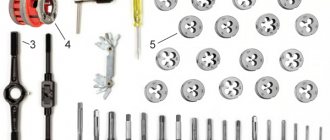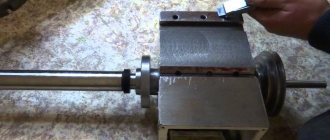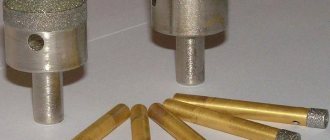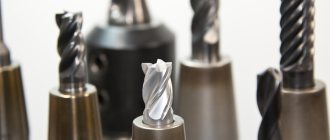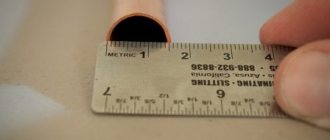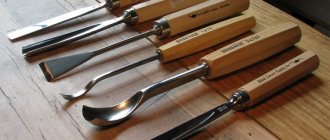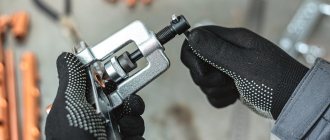home
About company
Directory
Steel hexagon
Rolled products with a cross section in the shape of a solid regular hexagon belong to long products; Unlike shaped steel, the tangent to any point on the section contour of long products does not intersect its section.
The specific shape determines the area of application of the hexagon, these are:
- decorative and finishing works;
- production of hardware products;
- production of medical equipment and food industry equipment;
- parts and elements for equipment in the mining and oil industry, mechanical engineering;
- load-bearing and enclosing structures for various purposes.
The quality characteristics of hexagonal rolled products depend on the production method and grade of steel (carbon, low-alloy and alloy). According to the production method, a steel hexagon is:
- calibrated
(produced by cold rolling, weight per linear meter, maximum deviations, size range for the diameter of an inscribed circle from 3 to 100 mm is regulated by the GOST 8560-78 assortment). - hot rolled
(produced in accordance with the GOCT 2879-2006 assortment, introduced on June 30, 2009 to replace GOST 2879-88). The lower cost of hot-rolled hexagons compared to calibrated ones and a wider range of applications explain the demand for this particular type of hexagonal steel in the rolled metal market.
Classification of hexagonal rolled products according to GOCT 2879-2006 assortment
Rolled hexagonal sections are divided according to the following parameters: rolling accuracy, angle accuracy, bar curvature, type of bar length and maximum deviations for cut and multiple cut lengths.
| Compliance parameters of hot-rolled steel hexagon GOST 2879-2006 | Subgroups | Abbreviation for designation (also used in the symbol of hot-rolled hexagon) |
| According to rolling accuracy | Increased accuracy | B1, B2 (with symmetrical switches) |
| Normal accuracy | B1, B2 (with symmetrical deviations), B3 (plus deviations along the inscribed diameter). | |
| By accuracy (bluntness) of angles | Group | BOO |
| Group | VU | |
| By lenght | Measured length | MD |
| Measured with unmeasured length | MD1 | |
| Length, multiple of measured | KD | |
| Length, multiple of measured, with unmeasured length | KD1 | |
| Unmeasured length | ND | |
| Length having restrictions within unmeasured length | OD | |
| Length having restrictions with unmeasured length | OD1 | |
| Steel square, supplied in coils | NMD | |
| According to maximum length deviations (this parameter is applicable only for hexagonal rolled products of dimensional and multiple dimensions) | Group | VD |
| By curvature | Class | I |
| Class | II | |
| Class | III | |
| Class | IV |
Appearance of a set of hexagons
All types of hexagons are based on an iron rod. It is on it that the first impulse of torque falls, and therefore its strength is of great importance.
The raw materials used for its production must be reliable, resistant to destruction, and suitable for long-term use.
Size range, weight and basic geometric parameters
The size/number of a hexagonal section is determined by the diameter of the circle d inscribed in it (d is equal to the distance between parallel edges - “key size”). According to the GOCT 2879-2006 assortment, the minimum permissible size is d=8 mm, maximum d=103 mm.
Step size range of hexagonal rolled products:
- for d from 8 mm to 20 mm, the step is 1 mm;
- d from 20 to 30 mm, step 0.5 or 1 mm;
- d from 30 to 40 mm step 1.5 or 0.5 mm;
- d from 40 to 50 mm the pitch can be: 4.5 mm, 2 mm, 2.5 mm, 3 mm, 0.5 mm;
- d from 50 to 103 the step is 1, 2 or 3 mm.
GOCT 2879-2006, weight of a linear meter of a steel hexagon with an inscribed circle d, mm
| No. of hexagonal rolled products, d of inscribed circle, mm | Weight 1 m/linear, kg | Whole meters per ton | No. of hexagonal rolled products, d of inscribed circle, mm | Weight 1 m/linear, kg | Whole meters per ton | No. of hexagonal rolled products, d of inscribed circle, mm | Weight 1 m/linear, kg | Whole meters per ton |
| 8 | 0,435 | 2298 | 18 | 2,203 | 453 | 67 | 30,518 | 32 |
| 9 | 0,551 | 1814 | 19 | 2,454 | 407 | 72 | 35,242 | 28 |
| 10 | 0,680 | 1470 | 20 | 2,719 | 367 | 78 | 41,361 | 24 |
| 11 | 0,823 | 1215 | 20,5 | 2,857 | 350 | 85 | 49,118 | 20 |
| 12 | 0,979 | 1021 | 23,5 | 3,754 | 266 | 88 | 52,646 | 18 |
| 13 | 1,149 | 870 | 28 | 5,330 | 187 | 90 | 55,066 | 18 |
| 14 | 1,333 | 750 | 42,5 | 12,279 | 81 | 95 | 61,355 | 16 |
| 15 | 1,530 | 653 | 47,0 | 15,017 | 66 | 98 | 65,291 | 15 |
| 16 | 1,740 | 574 | 55 | 20,565 | 48 | 100 | 67,983 | 14 |
| 17 | 1,965 | 508 | 60 | 24,474 | 40 | 103 | 72,123 | 13 |
The weight of a linear meter of a hexagon can also be calculated with greater accuracy using one of two formulas:
- on the side of the hexagon M = 0.007850×a²×(3√3)/2 = 0.020395×a² (kg/m), where a is the side of the hexagon in millimeters;
- along the radius of the inscribed circle (half the distance between any two parallel faces) = 0.007850×r²×2√3 = 0.027193×r² (kg/m), where r is the radius of the inscribed circle in millimeters.
For example, for hexagonal rolled steel No. 10, the weight of a linear meter (according to formula No. 2) is equal to:
0.027193×52 = 0.679825 kg (the rounded table value according to the product range is 0.680 kg).
The side length a(mm) of the hexagon is calculated by the formula:
a = d (mm)/√3 = d (mm)/1.73205; for example, the side of hexagonal roll No. 10 will be equal to: 10÷1.73205 = 5.8 mm.
Durable alloy for hexagon set
As a rule, all hexagons, regardless of purpose and model, are made from especially strong alloy steel. In some cases, other types of raw materials are used for this, including chrome vanadium or chrome molybdenum alloys.
The current GOST regulates a set of parameters that the raw material must meet, including its ability to withstand certain working forces.
To produce the screwdriver handle, elastic but fracture-resistant plastic is used. When casting it, a mold with recesses and protruding parts is used, which allows for a comfortable grip of the tool’s handle in the master’s palm.
Rod bent at right angles
The device of this modification is extremely simple. Structurally, it is a rectangular rod, the cross-section of which has the same value along its entire length.
In this case, the short part is necessary to give the rod a significant torque impulse according to the principle of lever action.
Density of abutment and girth
To ensure that the fixation occurs clearly and the tool does not fall off the slot, you must select a wrench attachment that will fit very tightly into the mounting slot. The same principle applies to hexagonal socket heads.
A tight fit will ensure that neither the spline nor the head of the fastener is damaged in any way.
Imbus modification of the instrument
Various modifications of hexagons are used for screwing and disconnecting various fasteners used today.
The imbus hexagon is the most primitive type of this tool. It can be used without hesitation or hesitation to work with any fastener equipped with a six-sided internal spline.
Sequencing
The sequence of work operations when disassembling a unit or assembly using a hexagon is as follows:
- A hexagon is selected that completely matches the dimensions of the fasteners being removed.
- The key is inserted into the slot to its full depth.
- In this case, it is preferable to insert the L-shaped key with the short part in order to provide a longer lever.
- A torsional force is exerted on the tool, which should increase until the moment when the screw begins to turn.
Disassembly using a hexagon
It will not be at all difficult to dismantle the part using a hexagon. It is only important not to violate the safety rules and not to strike the instrument in an attempt to increase its torque.
Selection of hexagon sizes
Hex keys and screwdrivers are produced in one and a half dozen dimensional modifications, which are regulated by the nomenclatures of ISO and ANSI standards. Currently, you can find models of instruments on sale, the working diameter of which ranges from 0.7 to 46 mm.
To effectively use a hexagon, you should choose an option that, in terms of diameter and features of the hand grip, fully corresponds to the tasks of the upcoming assembly or disassembly.
Correct choice of hexagon
Provided that the correct set of hexagons is selected, the master will have at his disposal convenient tools for any popular application, from bicycle repair to self-assembly of a desk.
In order not to get confused by the wide variety of products on the market, you need to take the following important rules as guidelines:
- A professional who constantly needs such a tool should buy a set containing at least 12 types of hexagons.
- In this way, he will invest his money profitably, since he will receive a full arsenal of tools for work for many years to come.
- A home master can limit himself to purchasing five modifications.
- They can be purchased during sales and promotions, which will provide significant savings.
- You can also take a ready-made small set if the online store offers an attractive discount on it.
The most reliable are keys and screwdrivers made of special tool steel or chrome vanadium. They will work properly for decades without losing the clarity of their edges and corners.
You should not buy products from a dubious Asian brand. Inexpensive Chinese keys and screwdrivers can destroy the fasteners of furniture assembled with their help and, on top of that, break at the most inopportune moment.
Set of hexagons of all sizes
Designers of machines and mechanisms use hexagonal splines if increased force must be applied to the fastening element. To quickly achieve the intended effect, installers usually keep many keys of this type ready at once.
Most often, such a tool set contains keys of all main sizes. Purchasing a variety of different tools, including a T-hex, will allow you to use the exact key and screwdriver that exactly match the configuration of the fastener if necessary.
Practical all-rounder
At the same time, you can find a universal hexagon on the market that allows you to install fasteners of many different sizes. This type of wrench is often used to solve locksmith problems, but due to its versatility, it is applicable in almost any industry.
- Repair;
- Assemblies;
- Packaging;
- Tuning.
